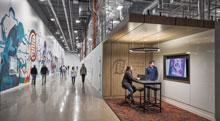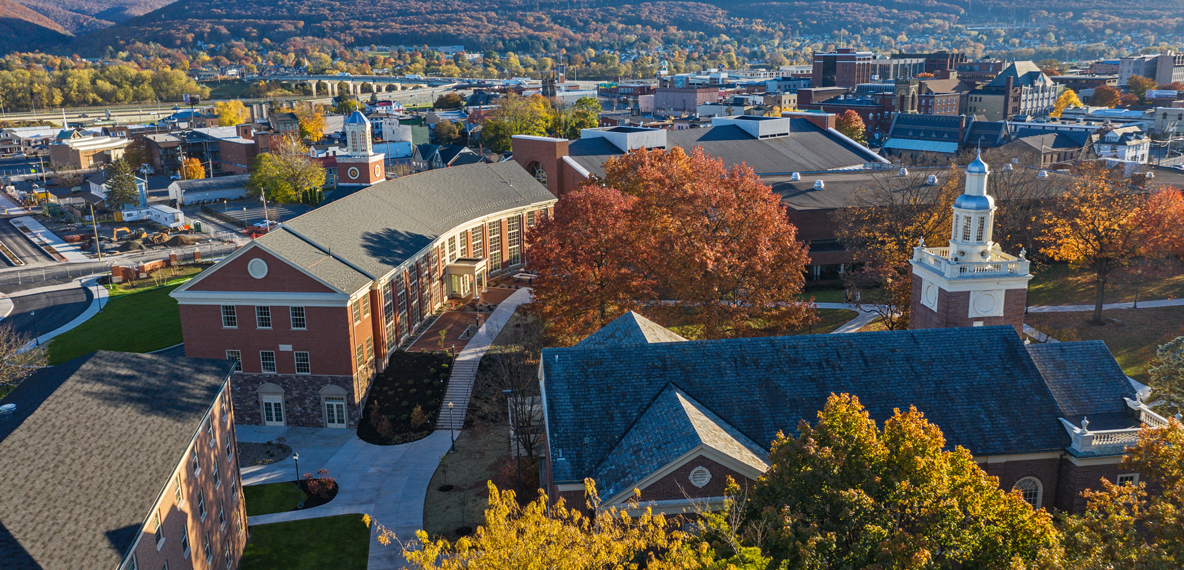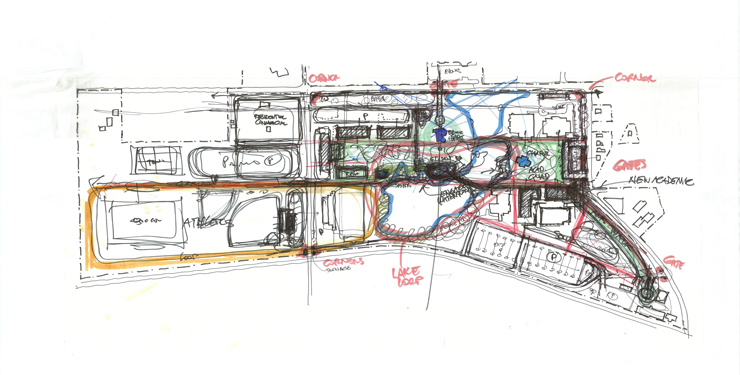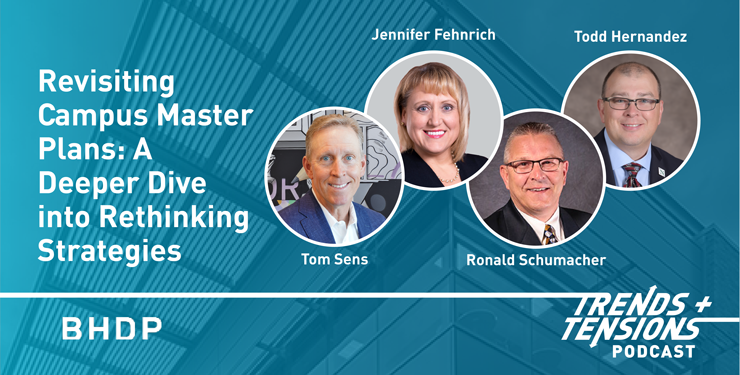
Strategy for Independent College and University Campuses: Where Do Presidents and Other Leaders Focus Next?

The pandemic accentuated the importance of the physical campus on enrollment, as students realized the campus environment is essential to their experience and, therefore, can be a significant influence in which institution they select. In the competitive climate for students, institutions must continue to compete and be responsive to the breadth and depth of student needs and desires while also being mindful of increasingly limited financial resources to do so.
As we continue to engage presidents, leadership teams, and boards of trustees in strategic planning sessions, these institutions have no shortage of initiatives related to the physical campus and their potential impact on the student experience. The first question becomes whether these initiatives are truly “strategic” and, therefore, are tied to both the student experience and institutional sustainability. Often, these initiatives must leverage available funding (which may be lower than ideal) and generate an almost immediate return on investment. Presidents undoubtedly would say most, if not all, of these initiatives are “priorities.” The lack of funding translates to the need to identify the most impactful “strategic imperatives,” such as investing in space to support a new health education degree program or improving first-year residence life facilities. Ultimately, the questions become, “Which priorities are you willing to spend money on fixing, how much can you invest, and how do you pay for it?”
Key Issues Impacting Campuses Today
Clear trends have emerged with these institutions, as we often hear Presidents and other leaders asking about several key issues:
- “Our student housing is a mix of traditional 1950s–1960s residence halls, with some suites or apartments added in the last 10-15 years. We have limited investment options but must ‘move the needle’ on the residence life experience. How do we compete with our peers' more modern and alternative housing options?”
- “Our total enrollment has decreased, and it likely will not return to the previous level (the campus is over-built). What space do we have on campus, what do we need to accommodate our current operations and modest growth moving forward, and how do we ‘get there’ while controlling capital and operating costs? Should we reduce the campus footprint and possibly monetize existing assets to fund other initiatives?”
- “Like many of our peers, we grew enrollment through athletics. We are struggling with space to accommodate all athletic programs (strength and conditioning space, athletic training, team rooms, coaches' offices, etc.). Our facilities are scheduled from 6 a.m. to 10 p.m., and our non-athlete students have nowhere to go for recreation and fitness (which is increasing in importance, including with the upcoming Gen Alpha). How do we address this puzzle?”
- “We are doubling down on a signature academic program to drive enrollment, and our existing facilities are outdated. We need to invest in competitive facilities to reflect the importance and prominence of this program and attract students. Knowing we need to invest, what are the possible scenarios to accomplish this responsibly while potentially leveraging existing assets?”
- “We must invest in our facilities (deferred maintenance, renovations, or new construction) and secure the appropriate funding. Who can help us first craft the strategy and message (business case) to support this effort, attract donors, or explore additional strategies such as asset monetization?”
Addressing these questions requires a strategic partner and planner who understands the business of higher education and is creative in leveraging existing assets to advance a strategy. The approach to solving these problems will require more focus on understanding the key issues, establishing implementable strategies (addressing both funding and logistics), and clearly articulating the benefits of action, ramifications of inaction, and costs involved to boards of trustees and other leadership.
Navigating Campus Renewal: BHDP’s Approach to One Client’s Student Housing Challenge
BHDP was recently engaged by an independent college president who realizes their institution’s student housing is not effectively attracting and retaining students. The existing residence halls were constructed in several eras, beginning in the early 1900s with significant investments in the 1960s and again in the early 1990s. Issues across all 1,100 beds include significant amounts of deferred maintenance, lack of modern programming space, traditional-style halls with community bathrooms, and outdated and worn interior finishes. Fully renovating or replacing housing of this magnitude is unattainable, which led the president to ask, “What can we achieve with varying levels of investment, from several million up to twenty million? What are the risks if we do … and what are the risks if we do not?”
BHDP developed several potential strategies on how best to invest with the ultimate goal of increasing enrollment. These strategies outlined our initial impressions and assessment of the existing conditions, varying scopes of work and their corresponding cost ranges, and comparative benchmarking from peer institutions to aid in establishing the “bar” for quality and competitiveness. This information was presented to the Board of Trustees as part of a broader conversation and work session to build momentum behind this important initiative. Many challenges are ahead, including determining the appropriate level of investment and ultimately securing funding. However, the president could clearly and concisely articulate the highest priority regarding the physical campus, which is a critical first step.
As a business consultancy and design firm focused on the higher education market, BHDP guides leaders in bridging their institutional strategy and the student experience. By integrating services such as academic program assessment and analysis, economic impact analysis, campus space utilization, and strategic campus planning, our collaborative design process yields implementable strategies to advance the institution. BHDP provides initial complimentary consultations with presidents and boards of trustees of independent colleges and universities throughout the United States.
Let’s strategize together. Reach out today for a consultation.
Author
Content Type
Date
May 20, 2024
Market
Practice
Topic
Campus Planning
Innovation



